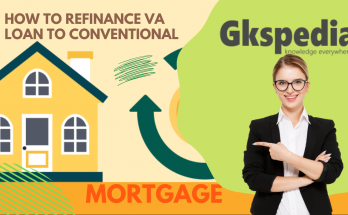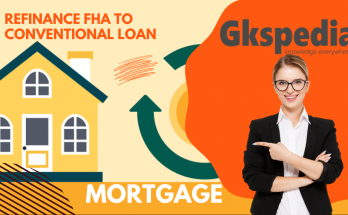Introduction: Are you a homeowner burdened by the high costs of your conventional mortgage? It’s time to discover a smarter financial move that can lead to substantial savings and improved loan terms. Welcome to our comprehensive guide on how to refinance a conventional loan to a VA loan. This strategic financial maneuver not only helps you secure a more affordable mortgage but also unlocks a host of exclusive benefits available to veterans and active-duty service members. In this article, we’ll walk you through the process of transitioning from a conventional loan to a VA loan, highlighting the key advantages that await you. Say goodbye to high interest rates and embrace the financial freedom you deserve by making the switch to a VA loan today.
If you are a qualifying veteran, active-duty service member, or spouse, refinancing your current mortgage into a VA loan may be a wise choice. Fortunately, if you fulfill the military service requirement and lender requirements, it shouldn’t be too difficult to meet the requirements to convert your mortgage into a VA loan.
Who qualifies for a VA mortgage refinance?
Generally, completion of 90 days of designated active duty military service during the conflict, six years of service in the National Guard or Reserve Service, or 181 consecutive days of service in peacetime active duty will qualify you for a VA mortgage. You may also be eligible for a VA loan if you are married to a military officer who died in service or as a result of a service-related disability. Unless you meet certain exceptions, you must be honorably discharged to be eligible.
Regarding her additional VA requirements, VA mortgages require a Certificate of Eligibility (COE) to prove military service. You must also agree to use your home as your primary residence. From there, individual mortgage lenders set criteria to determine if they are eligible for a VA loan.
Generally, a credit rating of 620 or higher is required to qualify for a VA loan or VA loan refinancing. Borrowers must also prove sufficient income to repay the loan, but the approval requirements are usually easier to meet compared to traditional mortgages.
What are the benefits of refinancing with a VA loan?
Refinancing your mortgage with a VA loan has many benefits. That’s why VA mortgages are so popular with those who qualify. A VA loan requires no down payment, but another federally-backed loan, the FHA mortgage, requires a minimum 3.5% down payment. However, you must be willing to pay the closing costs of refinancing.
Other key benefits of refinancing with a VA loan are:
No Mortgage Insurance Requirement: With a VA Mortgage, even with no down payment, borrowers do not have to pay mortgage insurance on top of their monthly mortgage payments.
Minimal initial costs: VA loans typically have financing fees paid upfront by the borrower, which can be included in the closing costs at the time of refinancing. (If you choose this option, you’ll be paying more interest because you’re funding those costs.) If you live with a disability and meet special requirements, or if your spouse can avoid subsidies entirely if you are a survivor of veterans or died of disability resulting from military service.
Interest rate savings: VA mortgage rates are generally competitive and often lower than traditional refinances. Run the numbers to calculate your potential savings. Some homeowners actually pay more when they refinance and reset the loan term, even if they lower interest rates.
Flexible eligibility criteria: Relaxed credit and income requirements for VA loans make it easier to qualify. (Note: Eligibility guidelines are more stringent for VA Cash Out Refinancing Loans). No Upfront Penalty: Like many other loans, a VA loan allows you to pay off your home early, if you want, without worrying about extra charges or “gotchas.”
Possibility of predictable monthly payments: If you currently have a variable rate loan, you can switch to a VA Fixed Rate Mortgage for predictable monthly payments.
VA Loan
VA loans are government-sponsored mortgages that help eligible veterans, military members, surviving spouses, and other select individuals buy, refinance, or renovate their homes. Veterans Affairs loans are not made by the Department of Veterans Affairs, but by private lenders such as banks and mortgage companies.
The federal government created the VA Mortgage Program to make it easier for people who serve the country to buy homes. This benefits program offers arguably the strongest loan options on the market. Eligible veterans can shop with no down payment, no mortgage insurance, flexible credit policies, and the lowest average fixed interest rates in the industry. VA mortgages are a specialized mortgage product, but the process is very similar to securing other types of mortgages.
This VA Loan Guide gives you the tools you need to navigate your VA home purchase or refinance and maximize your hard-earned benefits.
What is a VA loan?
VA loans are issued by the United States. Guaranteed by the Department of Veterans Affairs. While the loans themselves are not actually issued by the government, the fact that they are backed by a government agency makes lenders more comfortable offering these loans because they are less risky than traditional mortgages. You can feel
As a result, it is possible to obtain a VA loan with no down payment and possibly with looser credit standards. There are specific requirements that must be met and the lender will still have to approve you, but qualifying for a VA loan will allow you to acquire a home for less money than the bank requires.
How do VA loans work?
Basically, you fill out a form from the VA that confirms your eligibility for the program. You also get what is known as an entitlement, which is an amount guaranteed with each VA loan. The lender may be willing to lend you up to four times the amount on your bill.
This makes it possible to get a VA loan with no down payment. VA loans also do not require Private Mortgage Insurance (PMI) but pay a VA loan fee at closing. This represents a portion of the whole loan amount. This fee helps keep the program running for future borrowers.
VA loan eligibility requirements
First, you need to make sure you are eligible for a VA loan. The government has service requirements for veterans or active duty personnel and offers certain military spouses the opportunity to qualify for a VA loan. Details can be found on her government website, but the basic requirements are:
You are currently serving active duty or are an honorably discharged veteran who meets the minimum military service requirements.
90 consecutive days in wartime and 181 consecutive days in peacetime.
Or that he has been in service with the National Guard or Selective Reserves for at least 6 years. You may be eligible for a VA loan if your spouse dies in the line of duty.
A VA Certificate of Eligibility or COE is required to apply. Without this certificate, the loan cannot be obtained.
How to refinance into a VA loan
When you decide to refinance with a VA loan, you have two primary options:
Interest Rate Reduction Refinance Loan (IRRRL)
An Interest Rate Reduction Refinancing Loan or IRRRL allows you to refinance your existing VA loan to a new VA loan at a lower interest rate. This loan is available without any valuation or underwriting and all closing costs can be included in the new loan product. Financing fees for this type of VA refinancing loan may be lower than the fees for applying for a VA loan to purchase a property.
This loan is a good option if you qualify for lower interest rates due to lower interest rates and want to keep your monthly payments low. Note, however, that if you refinance your current VA loan with his IRRRL, you will no longer be able to receive payments from Equity.
What is an IRRRL?
Homeowners looking to lower interest rates on their current VA mortgage can easily make a profit with an Interest Rate Reduced Refinancing Loan (IRRRL).
Specifically, IRRRL aims to make existing mortgages more affordable by lowering interest rates to current market rates. For homeowners with a VA loan, it is one of the easiest loan products to apply for and qualify for, with less stringent requirements compared to traditional mortgages.
A borrower looking to reduce overall interest costs can use IRRRL to refinance his 30-year mortgage to his 15-year mortgage. However, the VA warns that you should make sure your new rate is at least 1 percentage point lower than your original rate to keep your monthly payments affordable. Pay off your home faster with a short-term loan and pay more
Who is eligible for an IRRRL?
Qualifying for IRRRL is fairly straightforward. Some of the key requirements for applying are a recent VA loan, no late payments, and proof of stable employment. Applicants must also have good credit. According to her January 2021 Origination Insights report from Ellie Mae Inc., the average FICO score for VA loan refi was 738.
Applicants must also prove that they occupied the home at some point during the original mortgage. This means that a home purchased with a VA loan can be converted into a rental property.
What are the costs of an IRRRL?
Users of IRRRL must pay a VA funding fee. This can be paid when the contract is signed or when the loan is paid. His IRRRL loan fee after March 2022 is 0.5% of the loan amount.
VA loan fees may be waived if any of the following apply:
Veterans with Service-Related Disabilities
Spouses of veterans who died or were permanently disabled in service or from service-related causes
Purple Heart Awarded Active Duty Military Personnel
One thing IRRRL does not allow is refinancing any kind of payment.
VA cash-out refinancing
VA Cash Out Refinancing Loans allow current homeowners to refinance their mortgages and take out some or all of their accumulated assets. This type of refinancing allowed veterans to have the cash they could use to pay off debts or make home improvements. When considering this option, you need to have clear financial goals and be realistic about your habits. For example, if you want to use cash for credit card payments, you should avoid accumulating unmanageable balances again in the future.
This type of loan can be used to refinance an existing VA loan or a traditional mortgage, with the VA insuring the loan for up to 100% of the home’s value. Like any other VA loan, this loan requires you to meet military service requirements and have a Certificate of Eligibility (COE) on hand.
VA Loan Calculator
Most military and active duty veterans are eligible for a VA home loan, and many reservists and National Guard members are eligible. To use this VA Mortgage Calculator, enter your loan amount, term, interest rate, and start date below to see your monthly payment. VA loans do not require a down payment from eligible borrowers to purchase prime homes.
Conclusion
If you currently have a VA loan or a traditional mortgage and want to refinance to a VA loan with better interest rates and terms, use the VA Loan Calculator to see how much your new mortgage will pay. Also, compare rates and terms from multiple lenders. Because lenders, not the federal government, ultimately set the interest rates and terms on those loans.
VA loans help you save money due to low-interest rates, limited closing costs, and no upfront payment requirements. If you already have a VA loan that you would like to refinance, IRRRL also allows you to transition to a new VA loan with no underwriting requirements.




